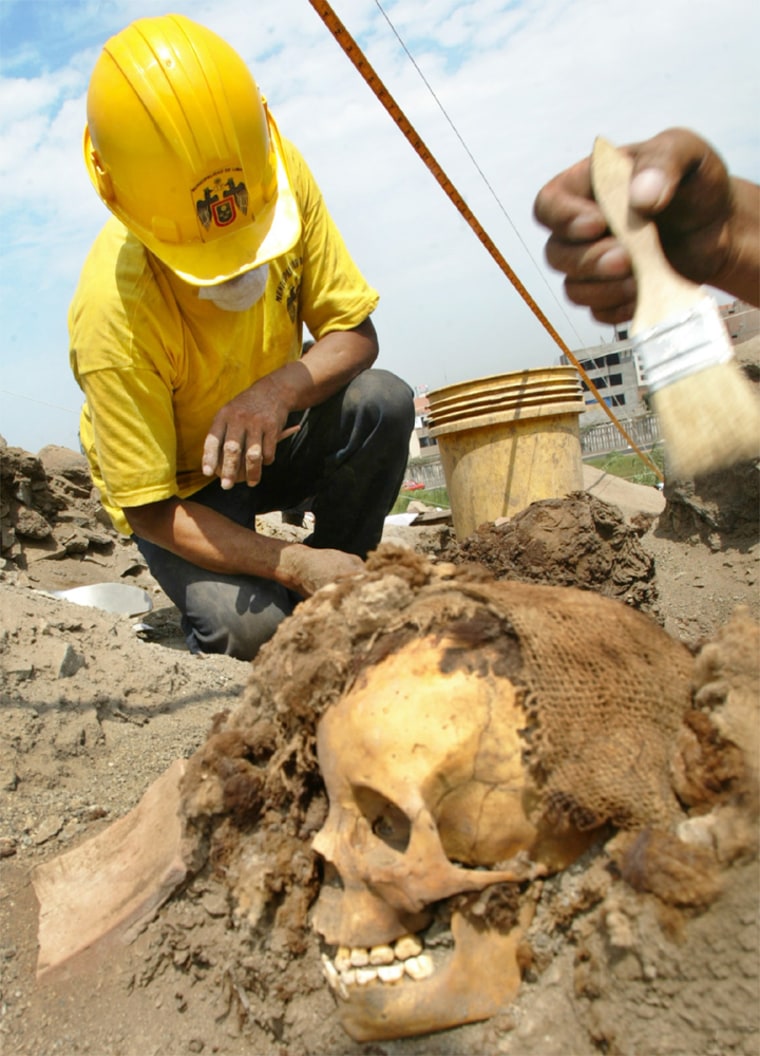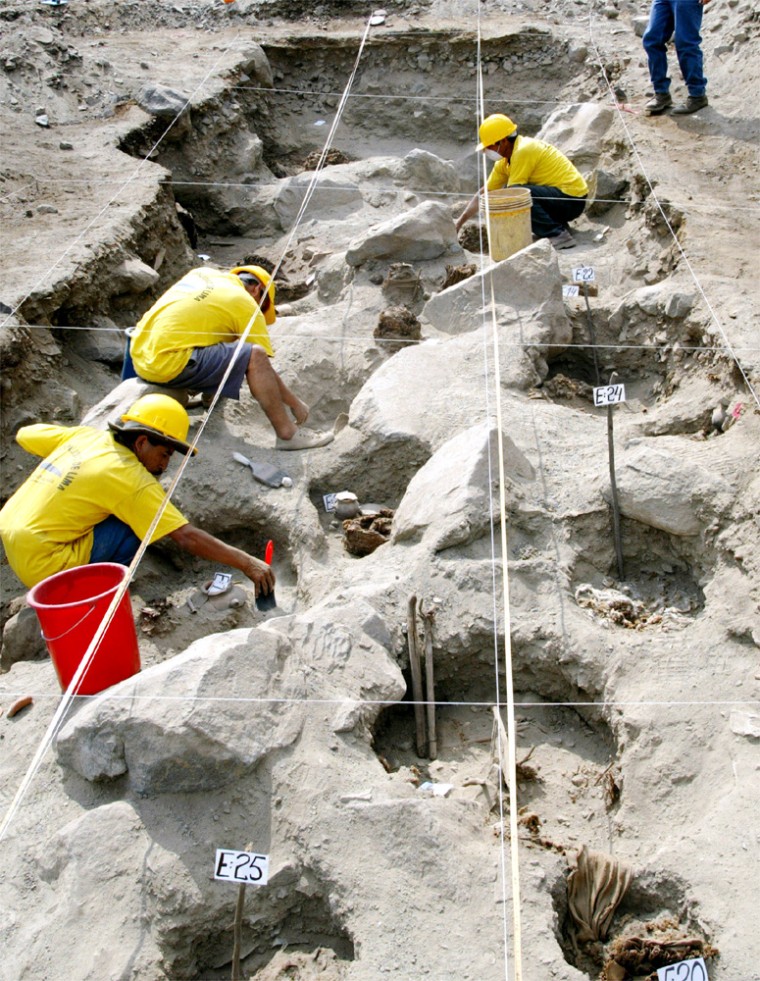Dozens of mummies dating back more than 500 years have been discovered on the path of a proposed highway on the outskirts of the Peruvian capital, near an Inca graveyard, archaeologists said Friday.
Archaeologists uncovered 26 burial bundles, each containing one or more adult and child mummies dating from 1472 to 1532.
In 1533, the Incas were defeated at the hands of the Spanish conquistadors.
“This (area) is part of the largest Inca cemetery in Peru and the largest excavated cemetery in the Western Hemisphere, that of Puruchuco-Huaquerones,” said archaeologist Guillermo Cock, who was contracted by Lima’s town hall to comb the area for artifacts before construction could begin.
Cock said archaeologists did not know the exact number of mummies at the site because they had not opened any of the bundles, which are still half-buried.
Some were already broken, exposing skulls and showing several hunched mummies with cloth bags tied to their bodies and offerings in their hands.
Farmers and craftsmen
The mummies were once farmers and craftsmen and lived under the dominion of the Lati and Ishma Inca leaders, who ruled over the Rimac River valley, home to modern-day Lima, Cock said.

“These are local inhabitants, what we could now call middle class, belonging to the period of the Inca Empire, between 1472 and 1532,” Cock told Reuters.
He said they were textile makers: “Ninety-nine percent of the tools in the tombs are used for such production, from dressmaking to cloth dying. There are needles and looms. The important thing about this discovery is that it is intact. ... The area around the mummies shows evidence of rituals prior to the burials. There are the remains of corn, beans, coca leaves and pots.”
Despite the finding, the town hall said the road — an extension to a busy urban highway — will go ahead.
“The works will not stop. They are an urban necessity. ... We will take the burial bales to a museum for conservation and for study. They could be plundered here,” town hall spokesman Armando Molina said.
But archaeologist Federico Kauffmann said Peru would be better off running the road through a tunnel under the site because it could yield further findings.
“In Peru, there is neither the money nor the techniques to preserve mummies, and there is no more space for mummies in the Puruchuco museum,” he said.
Thousands of mummies
Archaeologists have uncovered thousands of mummies in Peru in recent years, mostly from the Inca culture five centuries ago, including about 2,000 unearthed from under a shantytown near the capital in 2002.
One of Peru’s most famous mummies is “Juanita the Ice Maiden,” a girl preserved in ice on a mountain. Last month, two mummies predating the Incas — so well-preserved one had an eye intact — were found under a school in southern Peru.
